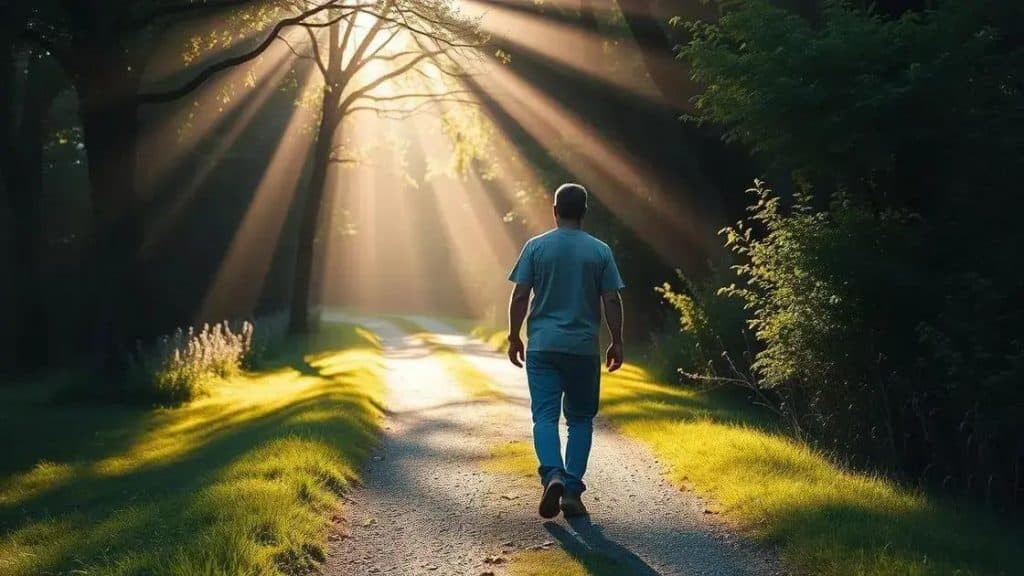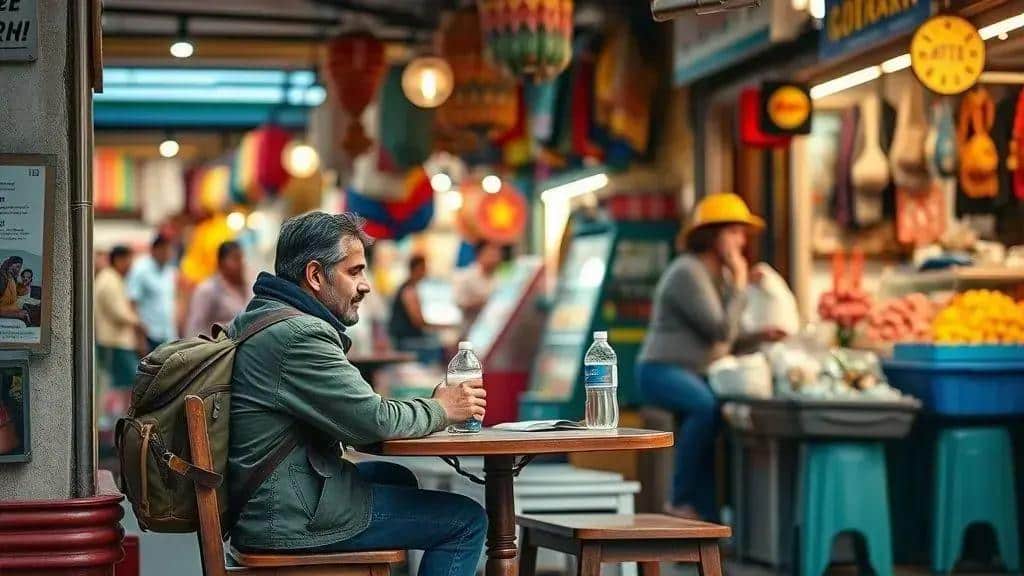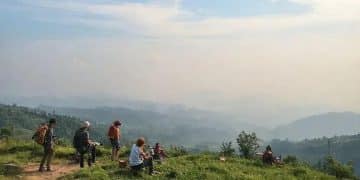Increasing popularity of slow travel: explore at your own pace

The increasing popularity of slow travel focuses on enjoying experiences at a relaxed pace, fostering deeper connections with local cultures and reducing stress during journeys.
The increasing popularity of slow travel invites us to rediscover the joy of exploration, allowing for deeper connections with places and cultures. Have you ever thought about how taking it slow can transform your travel experience?
Understanding the concept of slow travel
Understanding the concept of slow travel invites travelers to savor the journey rather than rush through it. This approach emphasizes quality over quantity, allowing for deep connections with destinations.
At its core, slow travel encourages exploration at a more relaxed pace. Instead of racing from one tourist attraction to another, you can enjoy the local culture, cuisine, and landscapes. This means taking time to engage with local communities, experiencing authentic moments that create lasting memories.
Key Principles of Slow Travel
Some essential ideas shape the concept of slow travel:
- Prioritize experiences that connect you with the locals.
- Embrace the beauty of your surroundings by staying in one place longer.
- Choose sustainable modes of transportation, like biking or walking.
- Focus on quality interactions rather than quantity of activities.
When you adopt the slow travel mindset, every moment becomes an opportunity for discovery. This means immersing yourself in local traditions, trying out regional dishes, and cultivating friendships with residents. For example, you might attend a local festival or join a cooking class to learn about traditional meals directly from indigenous chefs.
By embracing slow travel, there’s a chance to reflect and recharge, which can be particularly beneficial in our fast-paced world. Buildings, streets, and landscapes transform into more than just sights; they become part of your story. This connection to place enhances your travel experience and promotes a more sustainable model for tourism.
Benefits of slow travel for mindful explorers

Experiencing the benefits of slow travel can bring a fresh perspective to your journeys. This approach allows travelers to engage more deeply with their surroundings, fostering a sense of awareness and connection.
One of the most significant advantages of slow travel is the ability to immerse yourself in local cultures. By taking your time, you can participate in community events or learn a few phrases in the native language, enhancing your interactions with locals.
Key Advantages of Slow Travel
Here are some compelling benefits:
- Greater relaxation and reduced stress.
- Opportunities for meaningful connections with locals.
- Enhanced appreciation for the environment and local traditions.
- More authentic travel experiences, leading to richer memories.
This mindful approach also opens up a chance to discover hidden gems that tourists often overlook. You might stumble upon a small café serving handmade pastries or a scenic park where locals gather. Such experiences can create lasting impressions and stories to share.
The slow travel experience encourages you to prioritize your personal well-being. By shifting your focus from checking off a list of sights to truly soaking in each moment, you cultivate mindfulness. This awareness not only enriches your travels but can also lead to personal growth.
Traveling slowly allows you the freedom to change plans spontaneously. Whether you decide to stay an extra day in a charming town or explore a new trail, these choices add spontaneity to your adventures.
How to plan a slow travel itinerary
Planning a successful slow travel itinerary can greatly enhance your travel experience. It encourages you to take your time and truly enjoy each destination. To begin, think about the places you would love to explore without feeling rushed.
Start by narrowing down your ideal destinations. Instead of trying to see everything, focus on a few key locations. This allows you to dive deeper into each place. You might want to select a region known for its natural beauty or a city rich in culture.
Steps to Create Your Itinerary
- Choose a few destinations that interest you the most.
- Research local events or festivals happening during your stay.
- Allocate more time than usual for each location.
- Include flexible days to explore or relax as needed.
Once you have your destinations, consider transportation options. Instead of flying from place to place, look for slow-paced travel methods. Trains, buses, or bicycles can offer a more scenic journey. These options not only help you soak in the views but also connect you with locals.
Accommodation plays a vital role in embracing slow travel. Look for local guesthouses or rental homes that allow you to experience daily life in the area. Staying in one place longer gives you a chance to find your favorite local spots, whether it be a market, café, or park.
Lastly, be open to adjusting your plans. One of the joys of slow travel is the ability to pivot. If you discover a hidden gem, take that extra day to explore it. Flexibility allows you to create wonderful travel memories.
Tips for embracing slow travel in your journeys

Embracing slow travel in your journeys can lead to unforgettable experiences. By focusing on quality rather than quantity, you can create lasting memories while truly enjoying every moment. Here are some practical tips to help you get started.
Start by selecting destinations that resonate with you. Look for places where you can relax and reconnect with nature. Wander through quiet streets or discover local eateries away from tourist hotspots. This will allow you to soak in the culture at a much deeper level.
Practical Tips for Slow Travel
- Travel light to keep your journey flexible and manageable.
- Limit your itinerary to 2-3 destinations for a more immersive experience.
- Engage with locals to learn about their traditions and lifestyles.
- Allow for unplanned adventures and explorations.
When traveling, choose to stay longer in each place. This allows you to create a routine, such as visiting a local market each week or returning to a favorite café. By doing this, you become part of the community instead of just a visitor.
It’s also essential to appreciate your surroundings. Take moments each day to sit and reflect. Whether it’s in a park, at a beach, or in a cozy café, these moments can help you connect deeply with the place you are in. You might notice things you would have otherwise missed while rushing around.
Lastly, remember to be patient with yourself and your plans. Each travel experience can teach you something new, especially when you allow for spontaneity. This flexibility is often what makes slow travel so rewarding.
FAQ – Frequently Asked Questions about Slow Travel
What is slow travel?
Slow travel is an approach that emphasizes enjoying travel experiences at a more relaxed pace, allowing for deeper connections with people and places.
How can I plan a slow travel itinerary?
To plan a slow travel itinerary, choose a few key destinations, allocate plenty of time for each, and make room for flexibility and spontaneous adventures.
What are the benefits of embracing slow travel?
Benefits of slow travel include reduced stress, meaningful interactions with locals, and a greater appreciation for the culture and environment.
How do I engage with locals during my slow travel adventures?
Engaging with locals can be achieved by visiting local markets, participating in community events, and taking time to learn a few phrases in the native language.





